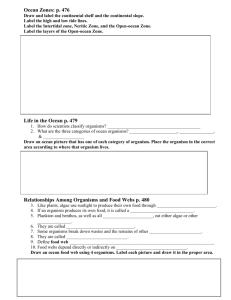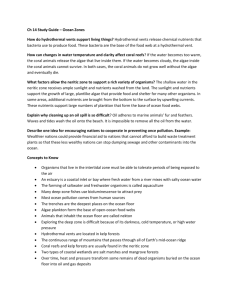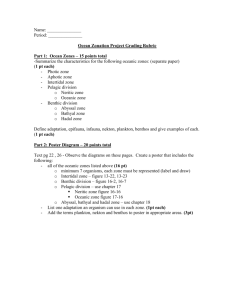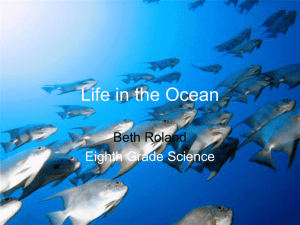Marine Ecosystems - NahikianScience
advertisement
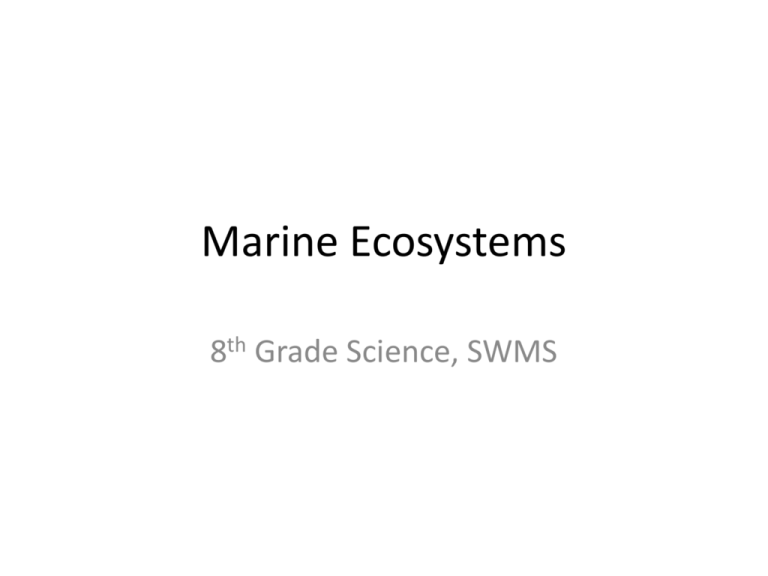
Marine Ecosystems 8th Grade Science, SWMS Types of Organisms • Organisms classified based on: – How they move – Where they live • Three types: – Benthos – Plankton – Nekton Benthos • Live on or near bottom of ocean – Snails, Starfish • Sometimes attached to ocean floor – Kelp Forests, Sponges Plankton • Tiny organisms that move due to currents. – Zooplankton- animal like. Example: Krill – Phytoplankton- plant-like. Example-algae and diatoms. Nekton • Free-swimming • Found in all layers of ocean • Examples: Fish, Whales, Eels, Seals, etc. Oceanic Zones • Three different zones based on distance from shoreline. – Intertidal – Neritic – Oceanic • Each house different organisms! **1** Intertidal • Description: Shoreline area between high and low tide mark. • Organisms: sea anemones, starfish, crabs, seaweed, barnacles, birds • Adaptations: Need to be to survive at high tide and low tide. Be able to hang on and not get washed away by the waves. • Characteristics of the water: Shallow. Neritic Zone • Description: gentle slope from the shore to the deeper ocean floor. • Organisms: coral reefs, kelp forests, fish, algae, starfish, eels, clownfish, sea anemones, turtles • Adaptations: Home to most life in the oceans. • Characteristics: Fairly constant temperature, sunlight, and salinity. Ocean depth up to 200 feet. Neretic Zone Coral reef First day (coral reefs and kelp forests) nemo Oceanic Zone • Description: Deep open waters. Hydrothermal vents • Organisms: whales, dolphins, sharks, squid, jellyfish, krill. • Adaptations: Most live in top 200 meters of the surface. • Characteristics: Sunlight only in the top 200 meters. High pressure and low temperatures below 200 meters. No sunlight and dark below 200 meters. Oceanic Zone Angler attack Angler nemo Hydrothermal Vents • Seawater moves into ocean from cracks in Earth’s crust. • High temperatures • Chemosynthesisbacteria use chemicals to make oxygen. • Unique ocean life! Challenger Descent • Images • Full length


